It’s easy to see why Portovenere is dubbed ‘the sixth Cinque Terre’. A romantic town of tall, multi-coloured houses and narrow alleys, it has a superb coastal setting on the tip of a promontory west of the Gulf of La Spezia. Like the Cinque Terre, teetering on precipitous cliffs to the northwest, Portovenere is protected as a UNESCO World Heritage Site. But unlike the famous five neighbours Portovenere has no railway station which helps keep the hordes of tourists at bay.
Riviera di Levante
The region, known as the Riviera di Levante, is quieter than the coast west of Genoa and still preserves what made it famous: the mountains tumbling into deep blue seas, the equable climate, picturesque villages, remote coves and an unspoilt hinterland.
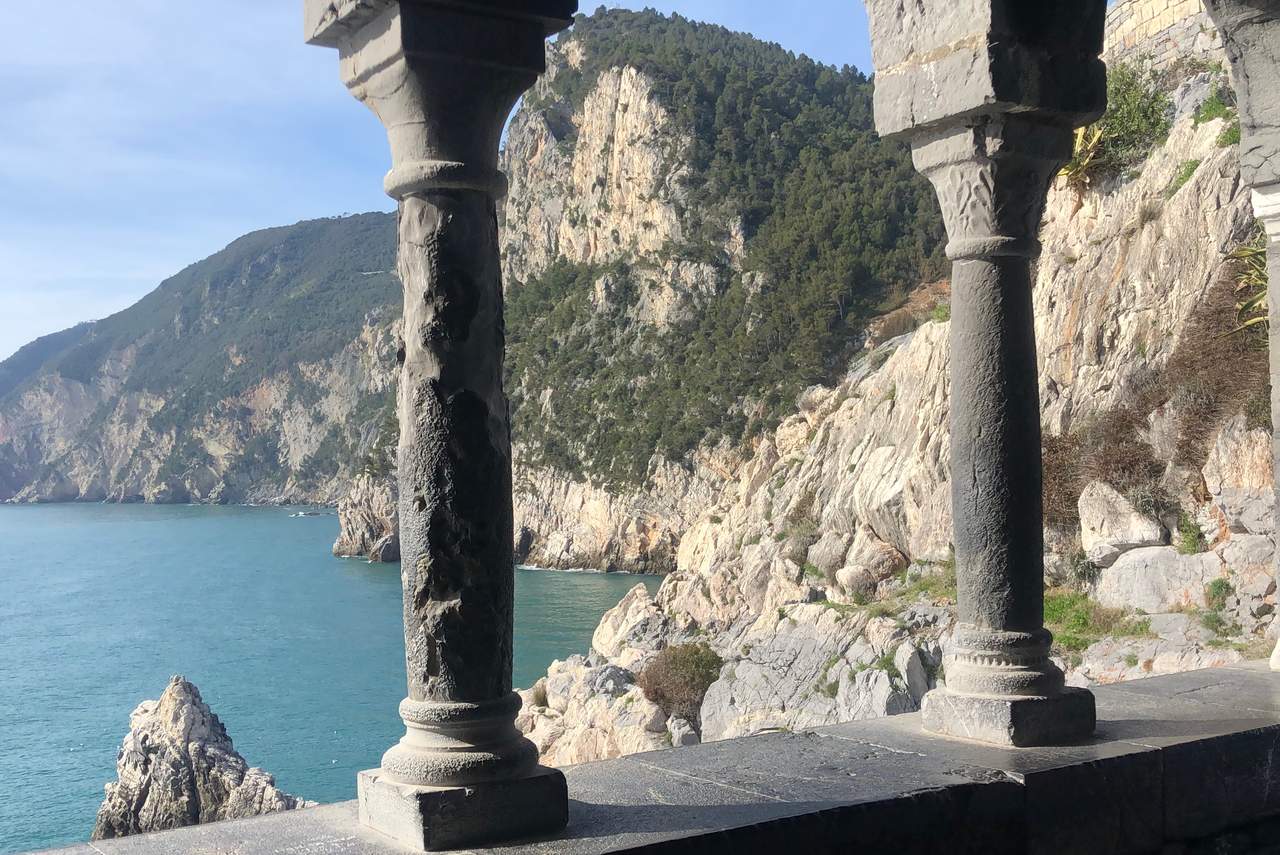
Coastal view from the cloister of St Peter’s Church
The image may be familiar but few Europeans outside Italy can actually place Italy’s Riviera. Many flock to the French Riviera to the west and Tuscany to the east but ‘the other Riviera’ or Liguria, as the region is officially known, has been comparatively neglected by foreign European travellers.
This was far from the case in the 19th century when well-heeled British and other northern Europeans flocked to the coast in winter, lured by the dramatic natural beauty and balmy winters. Sleepy fishing villages and backwaters west of Genoa became a playground for northern European royalty and aristocrats, while to the east the more spectacular Gulf of La Spezia inspired many a poet, from Dante and Petrarch to Shelley and Byron. Since 1919 it has been affectionately known as the Golfo dei Poeti or Gulf of Poets.
Portovenere
With its six-storey houses wedged below the castle, Portovenere is a ravishing sight if you arrive by boat. The lovely little Gothic Church of San Pietro stands at the tip of the windswept promontory, welcoming seafarers. A Roman temple to the goddess Venus (Venere) once stood here and gave the port its name.
The nearby Grotta Arpaia, also known as Byron’s Grotto, is said to have been the poet’s launching pad for his epic 8km (5 mile) swim across the bay in 1822 to visit Percy Bysshe Shelley at his last home, Casa Magna, at San Terenzo. In the same year Shelley drowned in a storm sailing back from Livorno after visiting Byron. Shelley’s wife, Mary Wollstonecraft, reputedly found her inspiration for Frankenstein at the castle at nearby Lerici.
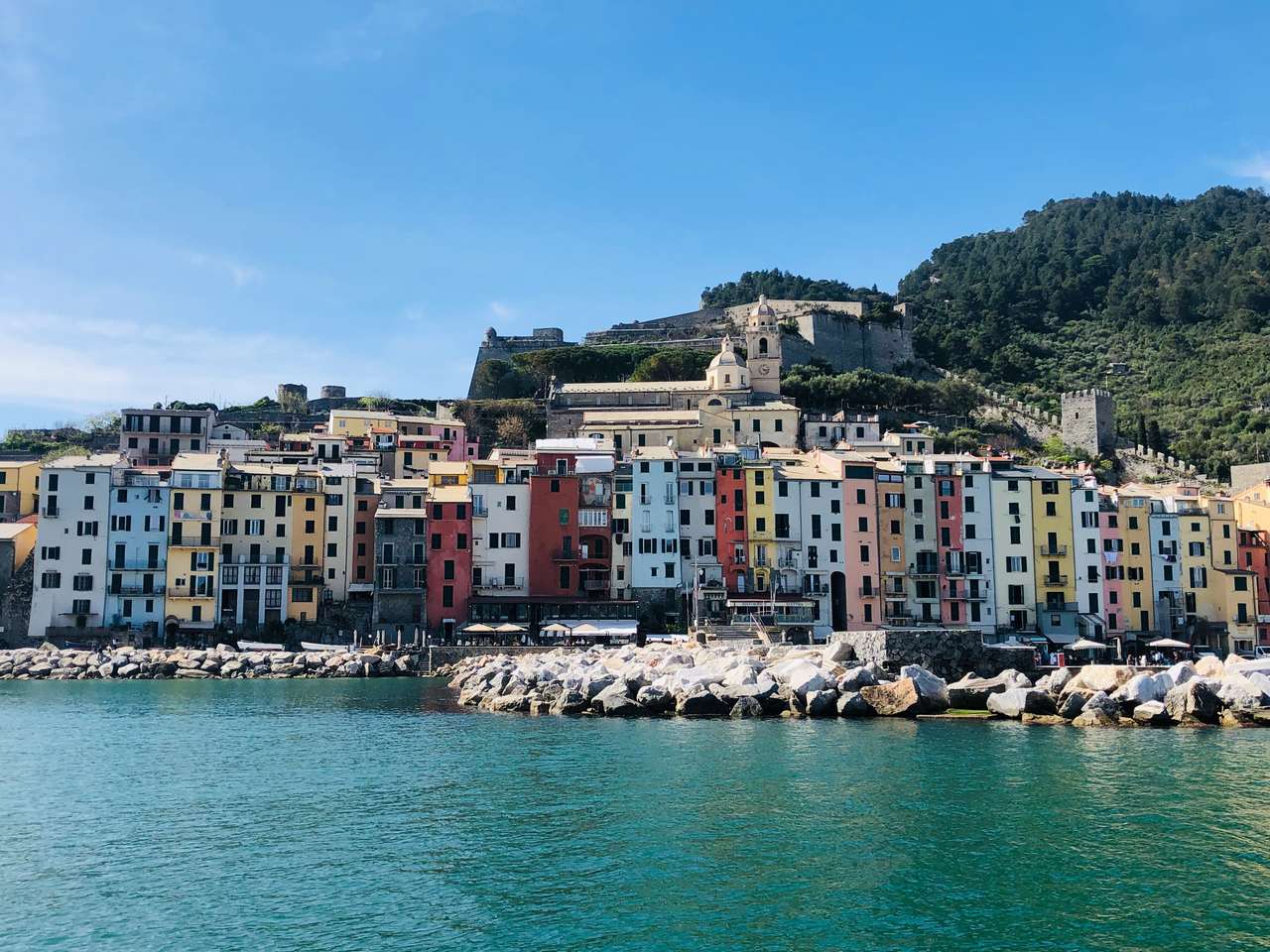
A steep climb up to the Castello Doria is rewarded with superb views of the bay
In the 12th century Portovenere was fortified by the Genoese in defiance of the Pisans who had built a stronghold at Lerici across the bay. The houses formed defensive walls with trapdoors used to block stairways and alleys between them. From the bustling waterfront, steep, narrow stairways lead up to the cobbled street and alleys of the old town, with the charming Romanesque Church of San Lorenzo and the imposing Genoese castle walls on the clifftop. From here there are fine views of the Cinque Terre.
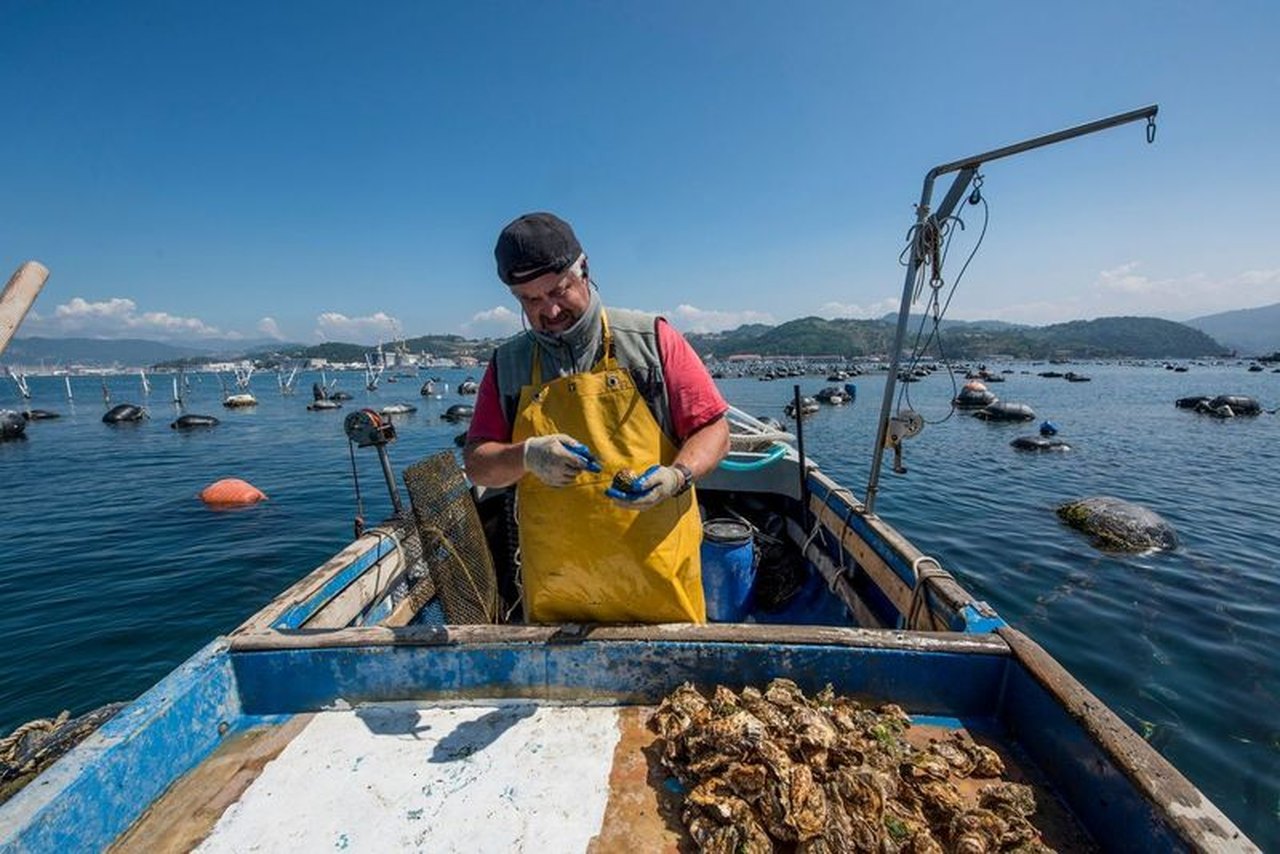
Oyster fisherman, Gulf of Poets
The seafront is strung with open-air cafes and restaurants serving local seafood. From the port, regular boats depart for trips around the offshore islands of Palmaria, Tino and Tinetto.
The latter two are military zones but visitors can land on the larger island of Palmaria which has well-marked walking trails and fine views of cliffs, coves and islands. A hike around the whole island takes around 4-5 hours, and there are rocks and pebbly coves for swimming.
Cinque Terre
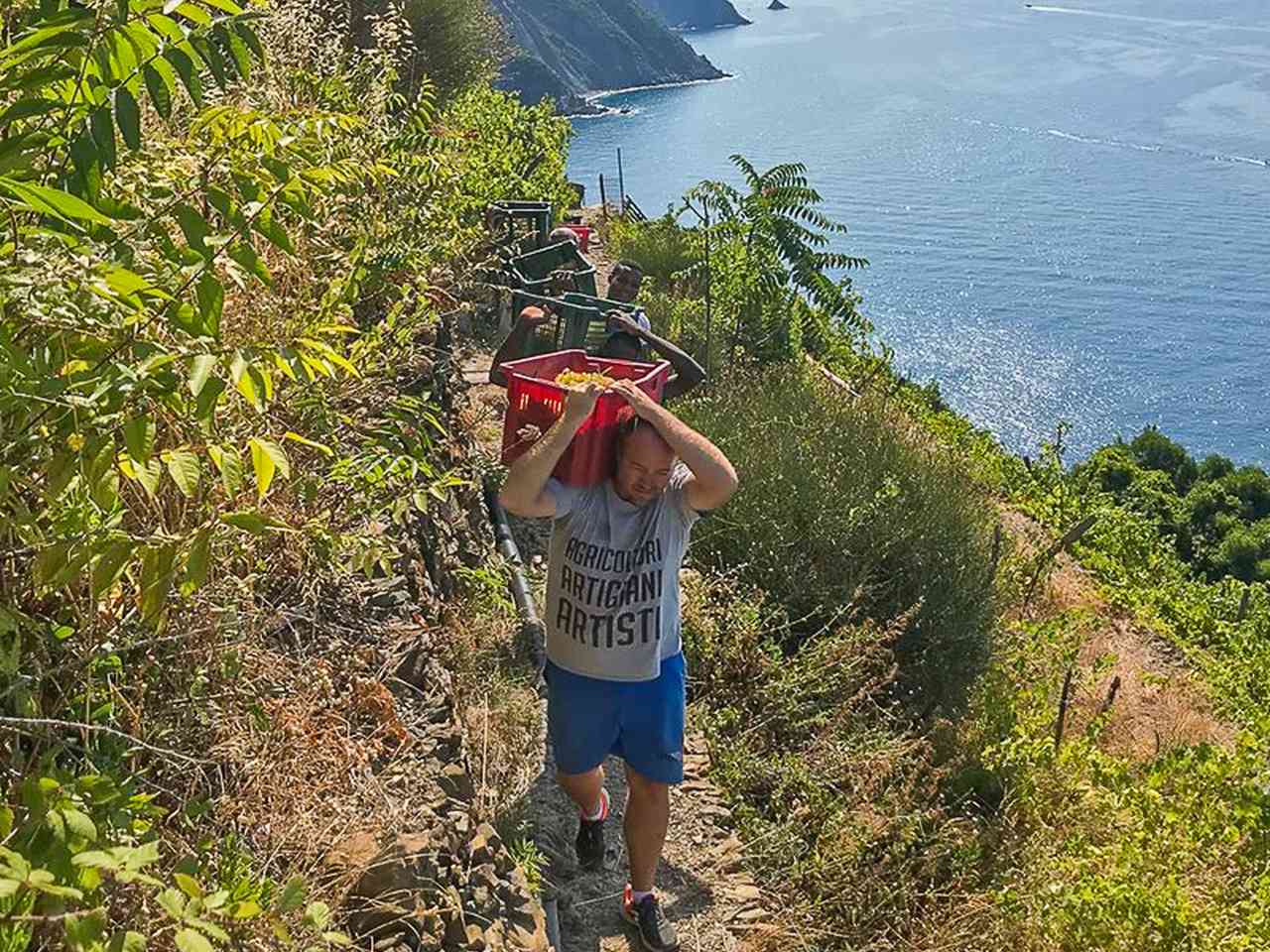
Hiking the steep paths of the Cinque Terre can be hard work – even without the grapes
The once remote Cinque Terre, which was linked only by foot and boat, now make up one of northern Italy’s most visited attractions. Despite commercialism, the five villages are still the stuff of picture postcards.
The hiking trails and stunning views along the coast bring boatloads and trainloads of sightseers, descending on the little ports and railway stations. Ideally, you should come in the low season (November to mid-April) or, at the most crowded times, admire the villages from a boat or ferry trip.
Vernazza
Vernazza is arguably the prettiest of the villages with its tightly packed houses and imposing church clustering around the small harbour. Corniglia, set high on a rocky outcrop about 100m (330ft) above the sea, is the smallest and least touristy of the five, as it entails a 377- step hike up from the railway station.
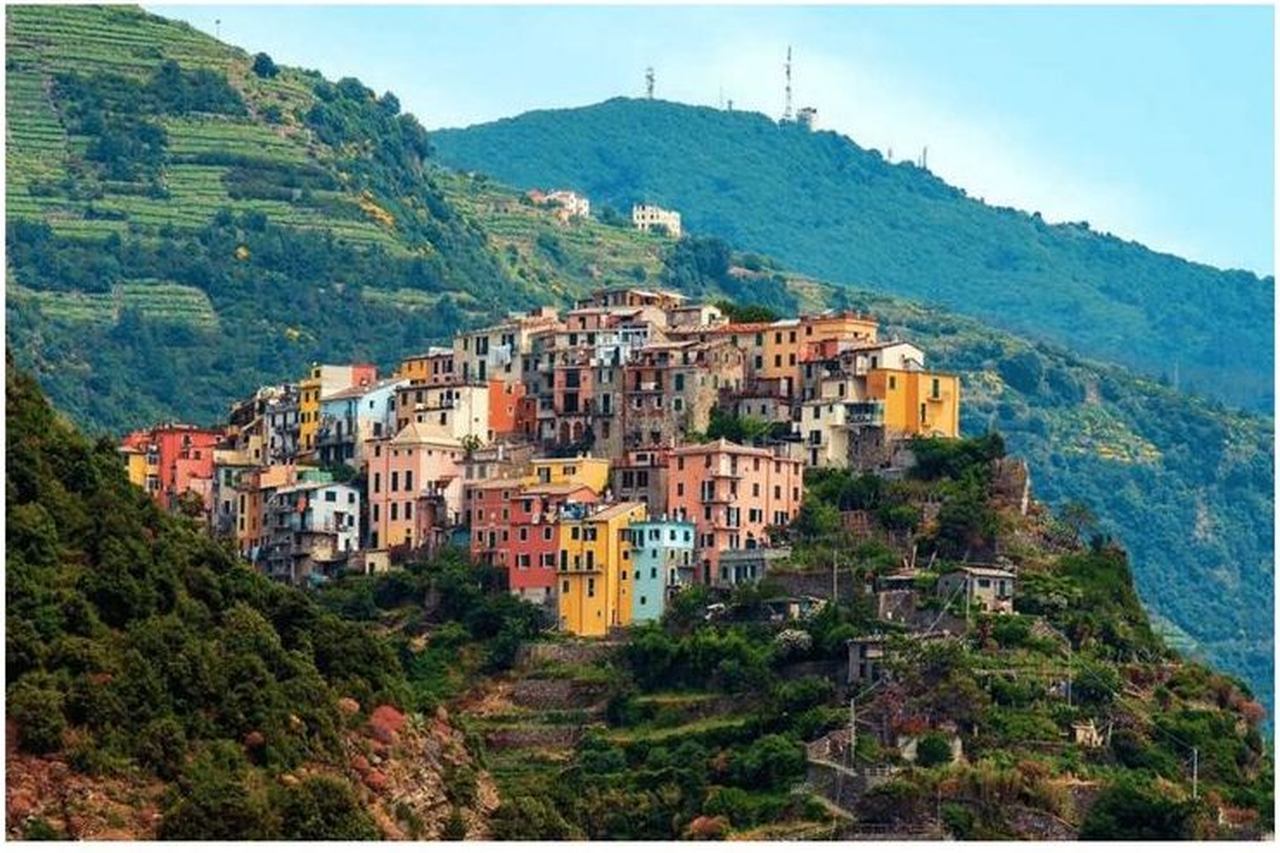
Corniglia, smallest and quietest of the Cinque Terre
Each village has a Gothic church and typically, a cluster of pastel-coloured houses clinging to the impossibly steep slopes, and centred around a central piazza. The five villages are linked by the Sentiero Azzurro (the Blue Trail) which is 14km (8.7 miles) long and takes around five hours or more. For this trail hikers need to purchase a Cinque Terre Trekking card, the proceeds of which are mainly used for the maintenance of the territory.
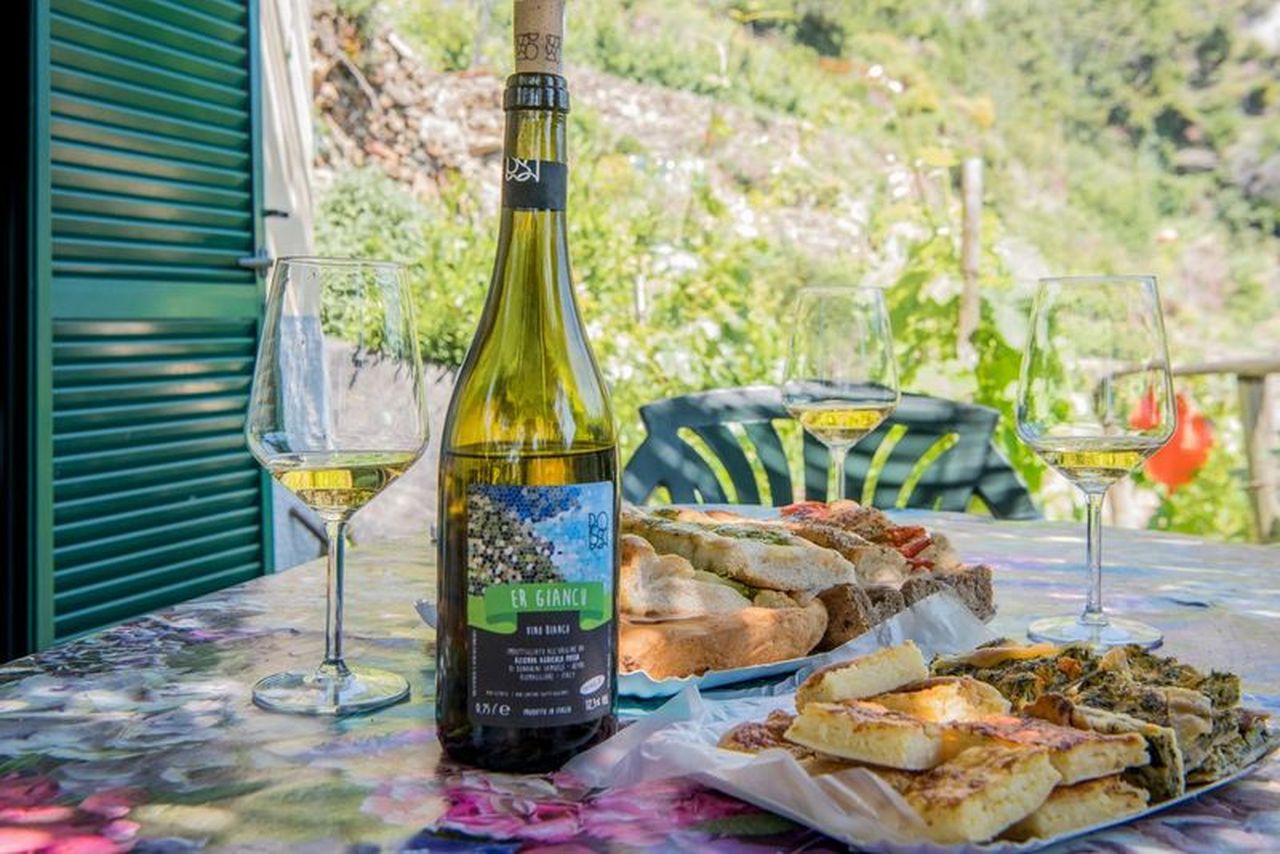
Winetasting with focaccia at the Possa vineyard
Remarkably 11,000km (nearly 7000 miles) of dry-stone walls were created over the centuries for the cultivation of vines on the vertiginous cliffs. There is little enthusiasm these days for the backbreaking work of digging the soil, restoring the walls and working the vines by hand.
Only about a dozen wine-makers can be found in the Cinque Terre today. One of these is Heydi Bonanini, who is passionate about the land and rebuilt his family’s centuries-old terrace, piece by piece, at a time when everyone was abandoning the steep slopes. You can visit his Possa vineyard (www.possa.it) in Riogmaggiore where chemical-free vines overhang the sea and bees enjoy the wild flowers and herbs all year round. The fruit of Heidi’s labours can be tasted at the winery in town (www.possa.it). The best-known of his brews is the nectar-like Sciacchetrà dessert wine, for which he has won many prestigious awards.
Maintaining terraces is essential for avoiding landslides. Floods devastated the region in October 2011 causing extensive damage to Monterosso and Vernazza. At the time of writing the path between Manarola and Riomaggiore (‘Lover’s Lane’) was still closed.
The fragrant and refreshing white wines of the region go down well with the local seafood. Oysters and mussels are cultivated locally, in the clear waters between Portovenere and Palmeria island.
A visit to the archipelago can be combined with an oyster farm and an explanation of how the molluscs are cultivated. There is nothing more pleasurable than a morning’s hike on Palmeria followed by lunch on board with platters of mussels and oysters, washed down with the white local wine. Follow with a cooling dip in a cove, a scenic tour of dramatic cliffs – then soak up the glorious views at sunset as you head back to Portovenere.
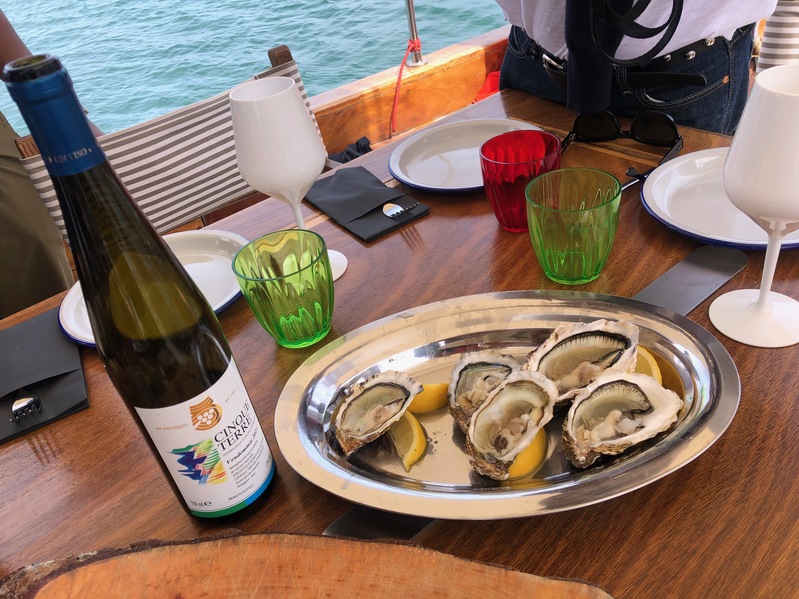
Oysters served on board in the Gulf of Poets
FACTFILE
Get there: Pisa airport is just over an hour’s drive to Portovenere.
Where to Stay:
Grand Hotel Portovenere, (See full accommodation review)
Hotel Colonna 24 (www.colonna24.com) an upmarket B&B
Where to Eat
Palmaria Restaurant at Grand Hotel Portovenere (www.palmariarestaurant.com)
Trattoria Tre Torri (www.trattoriatretorri.it)
Antica Osteria del Carugio (www.anticaosteriadelcarugio.it)
More info about Cinque Terre here

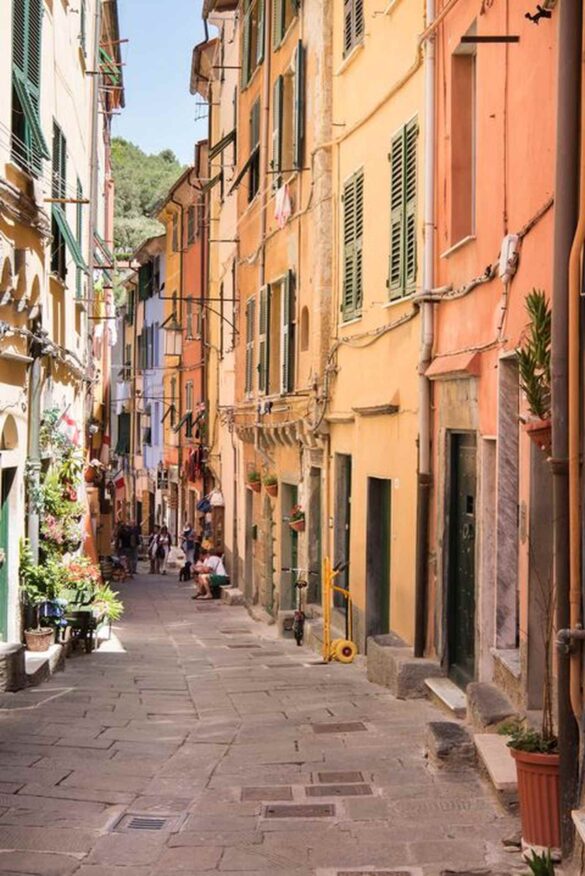
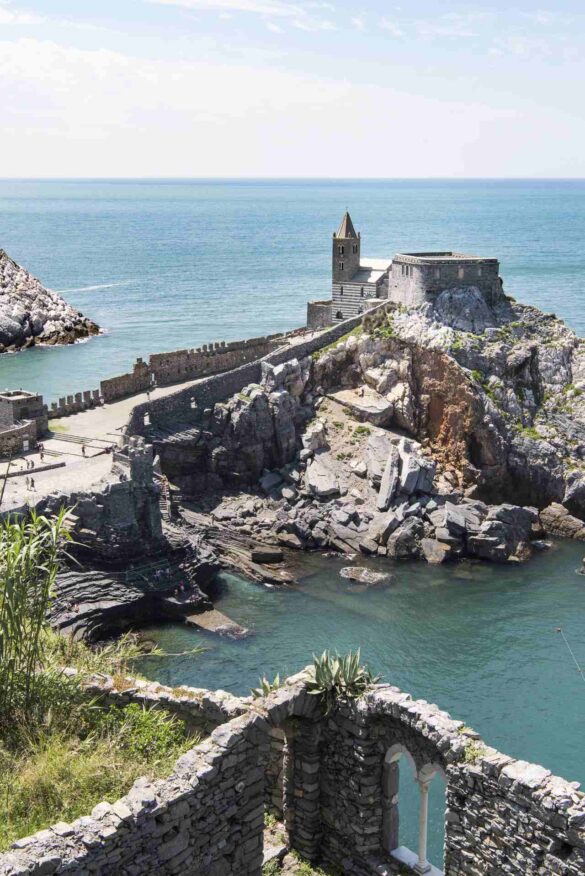
2 comments
Beautiful place, loved St Margarita de Liguria
Yes, agree about Santa Margherita Ligure – a lively resort with a lovely setting on the Gulf of Tigullio – and excellent train service to the Cinque Terre (Only 1hr 4 mins on the fast ones).